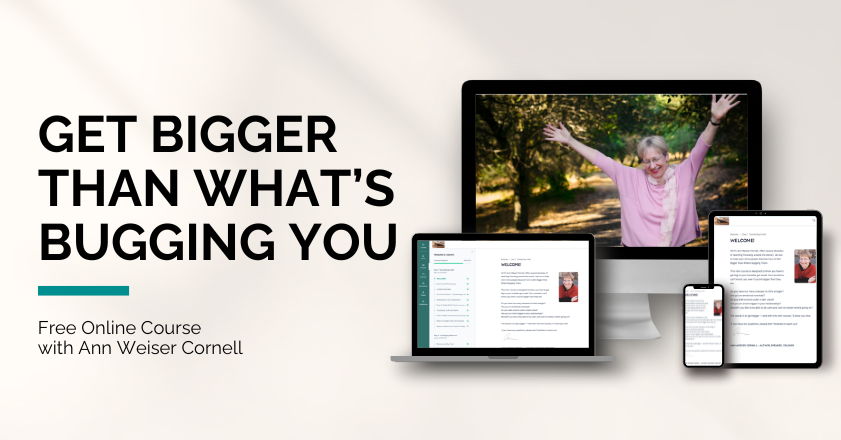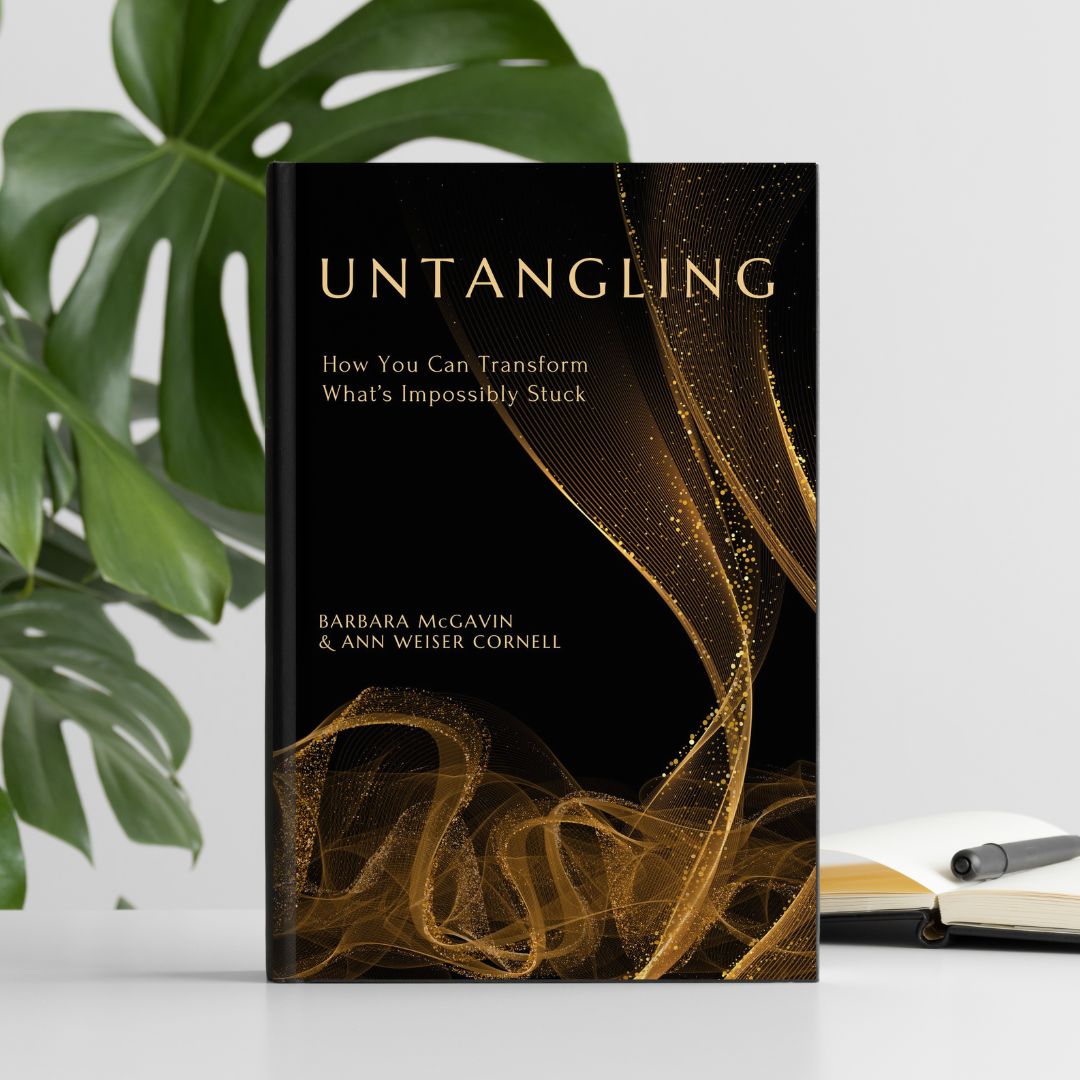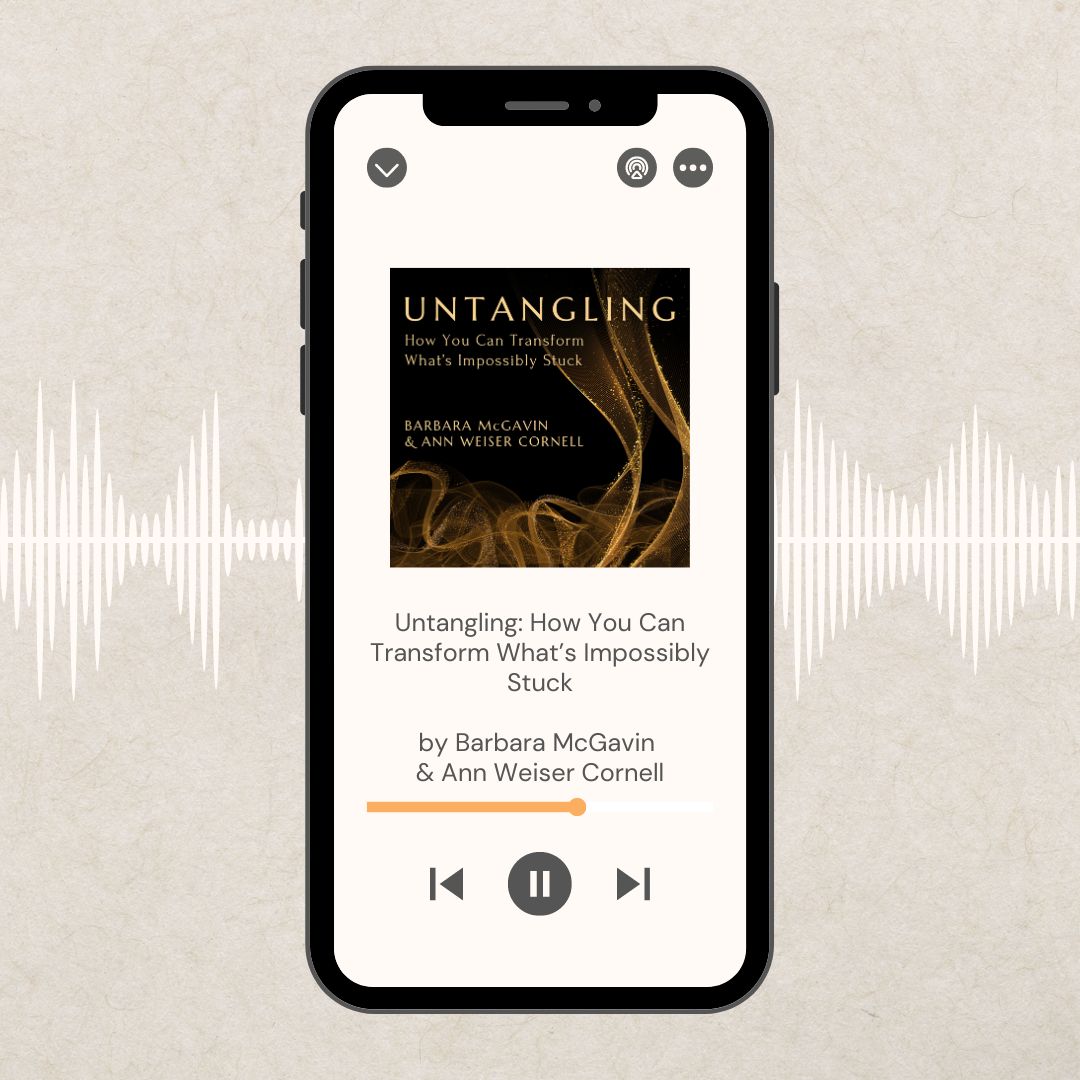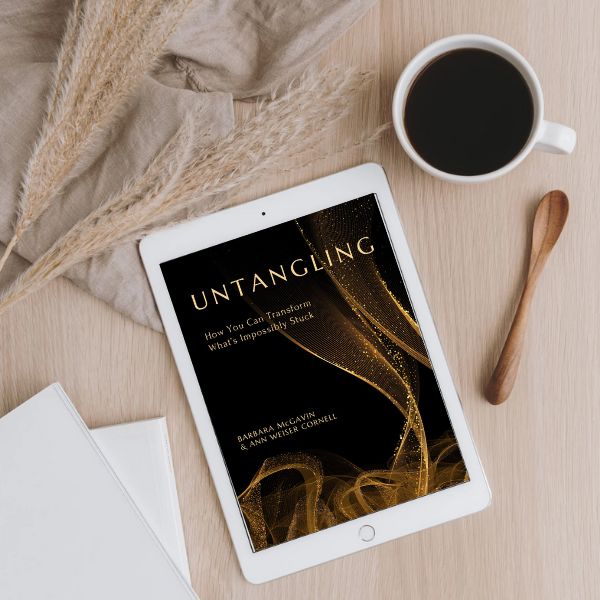The Doorway in a Moment: Inviting Your Clients to the Edge of Change
An On-Demand Course with Ann Weiser Cornell
Would you like to help your clients have breakthrough moments that lead to real change?
Is This For You?
Whether you’re a therapist dedicated to helping clients heal from past wounds and live fuller lives—or a coach committed to guiding people toward becoming their best selves—this course is designed for you.
If you’re ready to help your clients move beyond repeating the same stories, feeling stuck in painful emotions, or shutting down when things get hard—then yes, this course is exactly what you’ve been looking for.

Most of your clients do well of course… But if you have a few clients who are stuck, you’re probably searching for ways to help them connect with their own fresh life energy and capacity to move forward with their lives.
In the research on Focusing done at the University of Chicago, clients who tended to do best in therapy were able to make contact with a fresh and immediately felt bodily experience that they could not easily put into words – a felt sense. The felt sense was a doorway to change.
When the felt sense forms, it is the person’s next step of change already happening.
Three modules – Each introduces one or two new skills you can use to invite your clients to the edge of change.

How to Spot and Nurture a Felt Sense
Learn to spot the subtle ways felt senses show up and help your clients to stay with them so that shifts can happen.

How to Invite and Facilitate a Felt Sense
Discover cues and prompts you can use to help clients move from storytelling into present moment awareness, where change can happen.

Working with More Challenging Clients
Explore how to help clients who struggle to feel in the body, have trauma histories, or have a hard time being present.
About Your Teacher
Ann Weiser Cornell, PhD, is the co-developer (with Barbara McGavin) of Inner Relationship Focusing. Ann learned Focusing in 1972 from its developer, Eugene Gendlin, and was his close friend and colleague to the end of his life.
Ann is the author of several definitive books on Focusing, including Focusing in Clinical Practice: The Essence of Change, The Power of Focusing, The Radical Acceptance of Everything, and Untangling: How You Can Transform What’s Impossibly Stuck. She has taught Inner Relationship Focusing around the world since 1980, and is a past president of the Association for Humanistic Psychology. Today she is internationally recognized as one of the leading innovators and theoreticians of Focusing.

Skills You’ll Gain
In The Doorway in a Moment, you’ll learn how to:
- Spot the subtle indicators that your client is having a felt sense
- Support your client in valuing and staying with a felt sense – at the edge of change
- Invite your client to move into felt sensing from storytelling or intellectualizing
- Use unobtrusive prompts that can mesh with any modality or style of therapy or any type of coaching
And you’ll also learn about:
- Working with clients who are out of touch with body and emotions
- Bringing Inner Relationship Focusing into your work with your clients
- How getting in contact with the bodily felt sense is a key process for releasing trauma
- Assessing what your clients need based on their level of “experiencing” (and what that means)
Course Information
You might be surprised to learn that some little known but revolutionary research on client process done in the 1950s could give you new tools and fresh insights for your stuck clients. This research (done by Eugene Gendlin and others at the University of Chicago) studied the clients’ manner of experiencing.
Rather than looking at what clients were saying, the researchers looked at how they said it. The remarkable result was that clients who spoke articulately about their problems did not do as well in therapy as those who, in some moments in the session, were in contact with something so freshly and immediately felt that they could not articulate it easily.
Successful clients sounded like this: “It’s funny… there’s something I’m feeling right now… I can’t say it very well… um…”
Contact with something freshly felt is one indicator of contact with a felt sense – a freshly forming, wholistic, bodily sense of some life problem or situation. The research showed that some clients get felt senses naturally and others needed help to allow felt senses to form.
A felt sense is a doorway, an opportunity to go beyond fixed concepts and stuck patterns. We (and our clients) often miss those doorways, perhaps because our culture puts such a premium on being clear and articulate or perhaps because waiting with something unclear can feel almost terrifyingly uncertain. Yet if we want our clients to be able to move out of their well-worn roads of familiar repetitive concepts and emotions and into the fresh experience they are longing to feel, we need to help them have and stay with their felt senses.
This is done through subtle empathic prompts and un-intrusive invitations, set within a matrix of empathic attunement and relational awareness. These subtle prompts can be done within any modality of psychotherapy, from psychodynamic to CBT to somatic, and also within any style of coaching.
Helping clients find and stay with their felt senses is a way to help them move off the well-worn path of familiar concepts and repetitive stories; it’s a way to support the release of trauma-based frozen structures as well.
In this course, Ann Weiser Cornell shows you how to recognize, invite, and facilitate your clients’ felt senses. You’ll learn practical and specific methods that you can begin to use with your clients immediately. This is a powerful and immediate way to bring Inner Relationship Focusing into your work with clients.
― Eugene Gendlin
Are You Ready to Invite Your Clients to the Edge of Change?
Help Your Clients Move Beyond Their Most Stuck Issues
The Doorway in a Moment: Inviting Your Clients to the Edge of Change
Three Week On-Demand Video Course for psychotherapists and other healing professionals who want to help more clients move beyond stuck repetitive patterns and into new possibilities. Unlimited, lifetime access Access to our online forum Note: This is an interactive video course. Video was recorded during an actual live course and has been edited. Sound quality may vary.
How This Course Works

Be Supported In Your Process!
You won’t be going it alone! You’ll have access to a forum to chat with other students, plus access to Ann for parts where you might feel stuck.

Available at Your Convenience!
You can move through this course as quickly or slowly as you like. You’ll also have lifetime access to the material, so you can revisit it anytime







